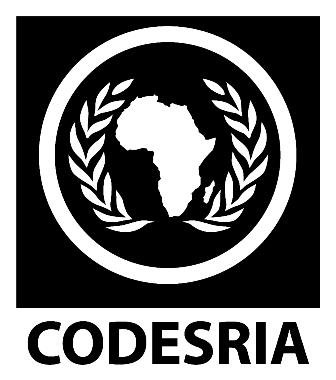Capital Flight and Domestic Macroeconomic Policies: Evidence from Nigeria
Mots-clés :
Capital movements, macroeconomics, economic policy, capital flight, political risk, NigeriaSynopsis
There is no scarcity of empirical studies into the problem of causes of capital flight or the associated
attempt to relate the phenomenon to economic growth and other macroeconomic stability indicators.
Studies that undertook that include Onwuoduokit, (2002), Ajayi (/992, 2002) l'astor (1990) among
others. 711e emerging list of am.ml variables is equally diverse - ranging from balance of payments
disequilibrium and real exchange rate distortions to political risks and other social imbalances ... and
growing! Expectedly too, different works place different premiums and weights on different causal
variables. Indeed, dislillingfrom the menu of variables that influence capita/flight will continue to be
a major challenge to macroeconomic researchers. One thing however lacks - a systematization of the
i11formatio11 distilled from these works for a theoretical understanding of the channels and nature of
the relationship between capital flight and Its key determinants. 1here is the added debate on how
effective or otherwise domestic fiscal and monetary policies can be in reducing capital flight, either
through impacting on these causes or by directly influencing capital flows. It is in these two areas that
this work allempts lo add value. Abstracting from and extending a model of capital flight. and
economic development. ii al/empts to evaluate the rnnditions leading to and channels of capita/flight.
if evaluates the concept <Jfrisk and returns and presents a perspective on assessing their contributions
lo capital flight using a micro portfolio management model. A central thesis of the work is that
i11vesting agents do not only consider risks versus returns in a country but also risks and returns in
a11y c0111111y vis-a-vis risks and returns in other wuntries in deciding where to invest. if also analyzes
the impacr <!f political risk a11d concludes that ii is central to capital flight. 77ie second part of the
work proposes a macroeconomic model with the intent.first ofempirical{v evaluating the place r!fri.1}
in capital movements and thereafier lo evaluate the e_ffectiveness of domestic fiscal and monetary
policies in combating capital flight. It fimnd evidence in support r!f' risk and volatility as influencing
the outflow <!f capital and<!{ capital flight responding directly to capital controls. hilt could not find
evidence lo support indirect control <J/' capital flight through using fiscal and monetary policies to
control uncertainly.
Téléchargements






